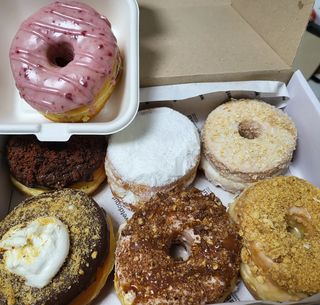Coffee and milk are a match made in heaven. From smooth café lattes to a simple homemade milk coffee, adding milk to your brew creates a creamy texture and balances out coffee’s natural bitterness. The best part? You don’t need a fancy espresso machine to make delicious coffee with milk at home—you just need the right method.
In this guide, we’ll show you how to make coffee with milk step by step, plus share different variations, pro tips, and common mistakes to avoid.
Why Make Coffee with Milk?
Coffee with milk isn’t just about softening flavor—it also:
- Reduces acidity, making coffee gentler on the stomach.
- Adds natural sweetness without extra sugar.
- Creates texture, from silky smooth lattes to frothy cappuccinos.
- Offers variety, letting you experiment with different milk types.
Whether you like it light and creamy or just a splash, learning how to make milk coffee properly can elevate your daily brew.
What You’ll Need
Here’s what you’ll need to prepare milk coffee at home:
- Freshly brewed coffee (instant, drip, French press, or espresso).
- Milk (whole milk for creaminess, skim or plant-based for lighter taste).
- Sweetener (sugar, honey, or syrup, optional).
- A saucepan or microwave (to heat or froth the milk).
- A mug or cup.
How to Make Coffee with Milk (Step by Step)
1. Brew Your Coffee
Start with your preferred method—drip coffee, French press, espresso, or even instant coffee. Use slightly stronger coffee than usual since milk will dilute the flavor.
2. Heat the Milk
Warm your milk in a saucepan over low heat or microwave it for about 30–45 seconds. Avoid boiling, as overheated milk loses its sweetness.
3. Froth the Milk (Optional)
For a café-style drink, froth your milk using:
- A milk frother,
- A French press (pump the plunger until foamy),
- Or simply whisking by hand.
4. Combine Coffee and Milk
Pour your hot coffee into a mug, then slowly add the warmed milk. Adjust the ratio to your taste:
- 50/50 for café au lait.
- ⅓ espresso + ⅔ milk for a latte.
- ½ coffee + a splash of milk for lighter coffee.
5. Sweeten and Enjoy
Add sugar, honey, or flavored syrups if you like. Stir gently and sip your creamy coffee with milk.
Checkout: How to Use a Moka Coffee Maker
Popular Variations of Coffee with Milk
- Café Latte: 1 part espresso, 3 parts steamed milk, light foam on top.
- Cappuccino: 1 part espresso, 1 part steamed milk, 1 part milk foam.
- Café au Lait: Equal parts brewed coffee and hot milk.
- Flat White: Espresso with microfoamed milk (smooth, velvety texture).
- Iced Coffee with Milk: Brew strong coffee, chill, then pour over ice with cold milk.
Also Know: How to Store Coffee Beans
Pro Tips for the Best Milk Coffee
- Use whole milk for richness or oat milk for a creamy, dairy-free option.
- Always heat milk gently—scalded milk tastes flat.
- Brew coffee a little stronger than usual, so the flavor shines through the milk.
- Experiment with spices like cinnamon, nutmeg, or vanilla for extra flavor.
- Try flavored syrups (caramel, hazelnut, vanilla) for café-style drinks.
More About: How to Use a Coffee Maker on the Stove
Common Mistakes to Avoid
- Using too much milk: It can drown out the coffee flavor.
- Overheating milk: Boiled milk loses sweetness and can taste burnt.
- Weak coffee base: Always brew stronger coffee when adding milk.
- Skipping the froth: Frothing elevates your drink from homemade to café-quality.
Read More: How to Make Vietnamese Coffee
Final Thoughts
Learning how to make coffee with milk is simple, but with the right steps, you can create drinks that rival your favorite café. Whether you enjoy a strong cappuccino, a creamy latte, or just a splash of milk in your morning cup, experimenting with ratios and milk types will help you find your perfect blend.
So next time you crave a comforting, creamy brew, skip the coffee shop and try making your own milk coffee at home—you might just discover your new favorite recipe.
FAQ’s
Whole milk creates the creamiest texture and naturally sweet flavor, making it ideal for lattes and cappuccinos. For lighter options, skim milk or plant-based alternatives like oat, soy, or almond milk work well. Oat milk is especially popular for its creaminess.
Coffee with milk has extra calories and fat compared to black coffee, but it’s also easier on the stomach because milk reduces acidity. It can be healthier if you avoid adding too much sugar or flavored syrups.
Yes, you can add cold milk directly to hot coffee for a quick and simple drink. For iced coffee, cold milk is perfect. However, heating or frothing milk creates a smoother, café-style experience.
Latte: 1 part espresso with 3 parts steamed milk and a light foam.
Cappuccino: Equal parts espresso, steamed milk, and foam.
Café au Lait: Equal parts brewed coffee and hot milk, with little or no foam.
Milk curdles when added to very hot, acidic coffee. To prevent this, use fresh milk, avoid boiling your coffee, and consider adding the milk slowly while stirring.





